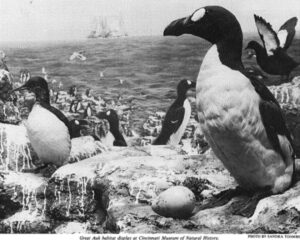A passion for the natural world drives many of our adventures. And when we’re not actually outside, we love delving into the discoveries about the places where we live and travel. Here are some of the best natural history links we’ve found this week.
Manatee ups and downs
Using lettuce to save Florida’s manatees: In 2017, a rare environmental success story hit the news. Manatees were being reclassified as threatened rather than endangered. The much-loved marine mammals often fell victim to boating accidents, but this was starting to decline.
Five years later, they are again nearing extinction. Along Florida’s Atlantic coast, the Indian River Lagoon had been a vital refuge for the manatees. But in 2021, run-off from industry caused algal blooms that kept sunlight from reaching the sea grass below.
With no seagrass, the manatees began to starve. Last year, 1,100 Florida manatees died, a record high. Locals are going to great lengths to save these charismatic sea creatures. Over a three-month period, volunteers threw 202,000 pounds of lettuce into the lagoon. It is not as good as seagrass, but on the coldest days, hundreds of manatees came to munch on the substitute food. Locals are now urging wildlife officials to take action to save this iconic marine mammal.
Stingrays can count
Mathematicians of the sea: Cichlids and stingrays can perform simple addition and subtraction. Scientists knew that the fish could detect small quantities and distinguish between them, but were shocked to discover that they can carry out simple calculations.
Researchers showed the animals images of geometric shapes. Blue images meant “add one”, while yellow meant “subtract one”. After seeing the original image, the fish then had to swim and select the image that showed the correct answer. If correct, they received a food reward.
The animals had to recognize the original number of objects and infer whether to add or subtract from their color. They had to keep both in working memory. And later, they had to choose the correct result.
“It’s a feat that requires complex thinking skills,” said zoologist Vera Schluessel.

Neptune. Photo: NASA/JPL
Neptune is getting colder: Neptune is the outermost planet of our solar system. Though researchers are familiar with its icy climate, a drop in temperature over the last two decades has baffled everyone.
Scientists studying Neptune’s stratosphere had expected to find rising temperatures during summer. Instead, temperatures are declining.
“The atmosphere appears more complicated than we had naively assumed,” said physicist Michael Roman.
The study used 95 thermal-infrared images taken between 2003 and 2020. The overall temperature in the stratosphere dropped by 8°C. Meanwhile, the temperature in the troposphere remained fairly constant.
Mapping coral reefs to tackle climate change: Scientists have mapped coral reefs in the Caribbean to identify which species are most likely to survive climate change. Coral reefs are under great threat from rising temperatures. If the temperature rises by just 1.5°C, between 70 and 90% of coral reefs will perish.
Researchers compared responses to heat stress and hurricane damage to identify which coral reefs need protection. Those with the highest chance of survival live along the northern shoreline of Cuba. Other encouraging sites included areas around the Bahamas, Dominican Republic, Guadeloupe, Haiti, eastern Jamaica, and Florida.

Fragments from the Mayan calendar show the seven-deer sign. Photo: Heather Hurst/David Stuart
The Seven Deer calendar
Earliest fragment of Mayan calendar found in ancient temple: Archaeologists in Guatemala have discovered the oldest Mayan calendar fragment. Two fragments of a mural, placed together, read “seven deer” — one of the 260 days in the Mayan divination calendar. The fragments come from sometime between 300 B.C. and 200 B.C. This shows that the Mayan divination calendar has been in use for over 2,300 years. It is still used by modern Maya.
“It’s the one calendar that survives all the conquests and the civil war in Guatemala,” says Mesoamerican art expert David Stuart.
Archeologists found the fragments at San Bartolo in the ancient Mayan city of Tikal. Over time, the Maya built over old structures, meaning that the complex is layered.
Researchers discovered over 7,000 mural pieces in all. It has taken decades to find and date them all. The “seven deer” fragments are the oldest.
Exocomets discovered around another star: Ukrainian astronomers have discovered five new exocomets. These are comets that orbit a star other than the sun.
Scientists study comets to gain insights into how Earth and the planets in our solar system formed. These exocomets revolve around the star Beta Pictoris. It is 65-light years away from Earth and between 10 and 40 million years old. Our sun is 4.5 billion years old. As Becta Pictoris is so young, it is giving astronomers a snapshot of the early years of a planetary system’s formation.






